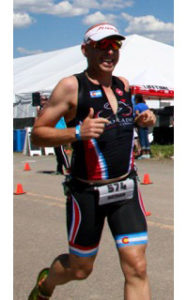 Fall is upon us. The days are shorter and nights are cooler. I really love this time of year. In Colorado, the air is crisp and clear. Autumn can be short here 90 degrees one day, snow the next and we’re on to winter!
Fall is upon us. The days are shorter and nights are cooler. I really love this time of year. In Colorado, the air is crisp and clear. Autumn can be short here 90 degrees one day, snow the next and we’re on to winter!
Off-season training: what does it mean? What’s the best use of your training time in the fall? Is it training or activity? Read on for great tips to keep you healthy and on track to meet your fitness and performance goals. I cover a lot of ground in this article, so I’ve split it into 2 segments. See what rings true for you.
- Take time off. Your body and brain need a break after training consistently and racing a full season. Mental and physical rejuvenation take place when you let go of the structure for a while. Give yourself permission to dial down and take a breather. In the long run, your performance will only improve. Even if you were not happy with your performance, take a break, then tackle your plan on how to improve next season.
- Prevent major fitness losses. Yes, a break is needed, but too much down time will cause excess detraining. Taking a 4-month break will leave you starting at square one. A good rule of thumb is to take 2-4 weeks off, depending on your goals and circumstances. Yes, you will lose some fitness, but will gain improved motivation and health in the long term.
- The off-season is the best time to work on improving existing skills or learning new ones. Triathletes are notoriously poor at bike handling. It’s a good time to re-tool your swim stroke if you’re giving up too much time in the water. Get a run mechanical analysis to improve your run skills. This is especially important for triathlon running as you will always race in a fatigued state.
- Address weaknesses. Take a look at any weaknesses in skills, but also your overall execution in training and racing. What worked, what did not? Take some time to sit down and go over your strengths and weaknesses. The off-season is a great time to spend more time making a weakness a new strength.
- Set new goals. It’s easy to be full of ambition and dreams at the beginning of the season, but how are you doing now, at the end of the season? If you didn’t hit your goals, time to reassess and create new ones. Take a fresh perspective. If you did hit your goals, what’s next? What’s new?
- Weight loss & weight maintenance. The off-season is a great time to lose any excess weight you might want to take off. It’s difficult to train, race and lose weight all at the same time. Weight maintenance through the off-season is very helpful when you return to regular training. You’ll feel better and perform better on all levels. This time of year make sure that the calories you take in don’t exceed what you’re burning.
- Clean up your diet. If you’ve gotten sloppy with your eating habits, time to clean it up. Eat basic, simple foods, organic when possible. Avoid processed, chemical-filled foods. Take some time to cook delicious, healthy meals. Learning a few easy recipes will stay with you for a lifetime. It’s a good time to work on improving your fat burning capacity through metabolic efficiency training.
- Try different activities. Now is a great time to cross train. Give your body something else to think about and work on: Rollerblading, cross-country skiing, hiking, ElliptiGo trainer (elliptigo.com), mountain biking, yoga, etc.
- Strength training. Strength training needs to be part of a year round training plan. Just in case you’ve slacked off, now is the time to get back to it. A good strength training plan should address weak areas, build muscle, burn fat and improve all activities in your life. Keep the strength training functional and change it up throughout the year to keep your body ‘on its toes’.
- If you have trouble with excess tightness, time to stretch. Get on the foam roller or try yoga. Balance out those overused muscles with some active recovery. One new activity I’ve been using for a couple of years is called the Melt Method. (www.meltmethod.com) Using gentle movement, this method rehydrates your tissue matrix, relaxes muscles and reduces pain in any and all areas of the body.
Next week, I’ll share 10 more ideas to make the most of your fall and winter training months. Maximize your off season!
Fall Run Clinic Series dates for 2016: October 30, November 6, 13 & 20.